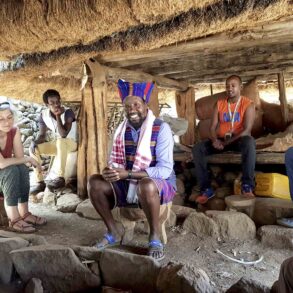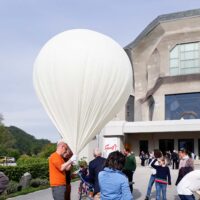In August of last year, the Intergovernmental Panel on Climate Change (IPCC) published the current state of knowledge on climate change.1 The report has bad news and good news: global warming is more dramatic than expected, but it is not too late to act.
More than 700 experts from 90 countries have evaluated over 10,000 technical contributions and have come to the conclusions described below. These statements were presented to political decision-makers at a conference, who could not make any objections or deletions because the description of the situation was so clearly scientifically substantiated.
In contrast to the fifth IPCC report2 the quality of our climate observations have improved, especially in the area of the interaction of the oceans with the atmosphere. If you compare the core statements of the current report with the report of 2013, you can basically see the confirmation of the statements made at that time. So we have known for a long time about the threat to the Earth and life on the planet.
It is becoming increasingly clear that warming and thus unstable weather patterns are linked to the emission of greenhouse gases by human activities. For example, the current CO2 concentration has risen to a level that last prevailed 2 million years ago.
The global mean temperature has risen by 1.1 degrees Celsius since the beginning of industrialization. However, the increase is unevenly distributed. The land masses warmed by 1.6 degrees and the slow-reacting oceans by 0.9 degrees. Of particular importance is the abnormal temperature increase of about 3 degrees in the higher latitudes of the northern hemisphere. The ecosystem of the Arctic waters and the ice conditions in Greenland and the Arctic Ocean has become so imbalanced as to be a threat to the entire earth.
This new climate report describes the connections between the more frequent weather extremes such as the intensity of heatwaves, heavy precipitation, or the duration of dry phases and the warming of the earth. The climate change that occurred in this century3 is already being experienced by life on earth.
The relationship of natural climate impulses (volcanism, solar rhythms, oceanic current rhythms) to anthropogenic influences can be represented more and more precisely. For example, natural stimuli in the last 170 years alone have led the average temperature to remain flat. As a driver of the warming of the last 170 years, therefore, largely only man-made influences come into question. First and foremost are the releases of CO2, methane, and nitrous oxide. The sulfate particles released have a cooling effect. Thanks to improved engines and incineration plants, however, these emissions have steadily declined.
The rhythms that used to pulse through the climate are broken; we are dealing with a climate break, not a climate change.
Ever-larger amounts of CO2 are absorbed by the oceans in the long term. This has serious consequences for living conditions in the oceans due to the associated acidification of the water. If the living conditions for the photosynthesis-forming plankton deteriorate, less CO2 can be converted into biomass. From this example, one can see how the interactions with life processes are crucial, rather than the mere numbers of particles released. Equally significant is the rate of change. As the IPCC report describes it, «The magnitude of recent changes throughout the climate system and the current state of many aspects of the climate system are unprecedented for many centuries to millennia.» The rhythms that used to pulse through the climate have been broken; we are dealing with a climate breakdown, not climate change.4
People in highly civilized countries have so far been largely spared the impending consequences. It first affects those regions where living conditions are difficult due to poverty, lack of water, educational deficits, and mismanagement. A current example is Afghanistan, the region that was the cradle of agriculture thousands of years ago. Equally endangered is the Sahel zone, which depends on the sensitive rhythms of the weather.
What is needed is an orientation toward the entire Earth, toward all of humanity. The greatest interest should be directed at the forces that produce and shape life. With this view of the whole, it becomes easier to change one’s own behavior as radically as possible. Not out of fear for one’s own future, but out of insight into the necessity, the break can be healed.
Photo: Alexis Antoine – Translation: Monika Werner
Footnotes
- Sixth IPCC Assessment Report, post from the Work Group I: Fundamentals of Natural Sciences.
- Fifth IPCC Assessment Report
- Hans-Ulrich Schmutz, ‹Goetheanum› 36/2019
- Ibd.














I very much appreciate the work done and although I am no scientist (retired Waldorf Class Teacher)I have recently seen a recording of Elana Freeland’s international webinar produced by MysTech, about her most recent book “Decades of Geo-Engineering”. This activity done without public awareness,”supposedly to decrease the heat of the sun”, is devastatingly affecting the felt climate by polluting the world’s atmosphere with chemical particulates, produced by the chemtrails in constant operation all over the world. I see them here in Scotland and the clouds no longer move but are as ‘man-made’ plasma clouds. Why do we not see any reference to this political activity anyway in the climate-change discussions? Surely, this is man-made climate change in an enormous way?